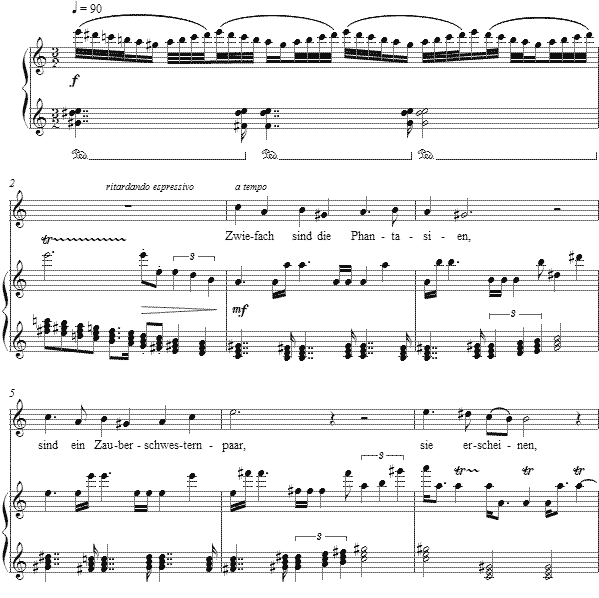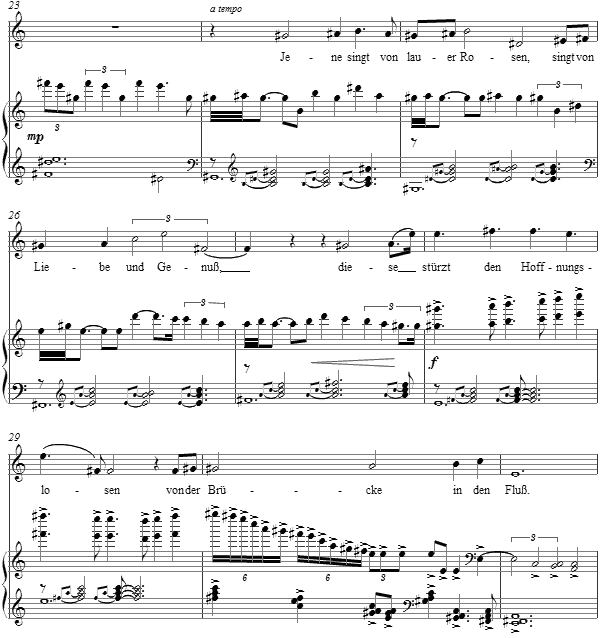Music and Texts of GARY BACHLUND
Vocal Music | Piano | Organ | Chamber Music | Orchestral | Articles and Commentary | Poems and Stories | Miscellany | FAQs
Zauberschwestern - (2009)
Wilhelm Busch
for medium voice and piano
Zwiefach sind die Phantasien,
Sind ein Zauberschwesternpaar,
Sie erscheinen, singen, fliehen
Wesenlos und wunderbar.
Eine ist die himmelblaue,
Die uns froh entgegenlacht,
Doch die andre ist die graue,
Welche angst und bange macht.
Jene singt von lauter Rosen,
Singt von Liebe und Genuß;
Diese stürzt den Hoffnungslosen
Von der Brücke in den Fluß.[ 4 pages, circa 3' 00" ]
Wilhelm Busch
These phantasms are a pair,
Are these magical sisters,
They appear, they sing, they rush by
Incorporeal and wondrous.
One is the sky of blue,
That laughs with us when happy,
But the other is the gray
Which invokes anxiety and fear.
This one sings of idyllic roses,
Sings of love and delight;
This is the one that throws the hopeless
From the bridge on the river.
gb
That the darker "gray" of pessimism which sings of "idyllic roses" and "love and delight" is a rather true insight into the state of man, a state which so easily falls into what some call that "politics of envy," in which what others have, tangible as well as intangible, becomes of source of irritation and despair. It is this darker side of life which resents and falls into such desolate traps that foster acts of frustration and violence. Yet, Busch reminds us that the whole of life -- like this "pair" of phantasmagorical sisters -- is in fact a kind of continuum in which the darker aspects not only breed greater darkness, but can give way to the brighter and not merely "sing" of love and joy, but create it by the simple perspective with which one sees these sister "phantasms."
The opening tonal region demarcates A minor with the raised 4th of the scale against the minor third, a harmonic mode which is inconsistently applied through the first few gestures reminiscent of European Ashkenazi and Römisch modes. The harmonies to accompany the first stanza of the poem are unsettled and shifting in quasi-parallel motion. A second stanza of the poem moves from the root on A to a bright E major for a moment, a breath of musical "blue sky" but quickly turns "gray" again.
The last stanza is a variation of the opening, this time rooted to begin with on G sharp, which gives way to E as a functional dominant to return ultimately to A harmonic minor, the root of the setting.
The score for is available as a free PDF download, though any major commercial performance or recording of the work is prohibited without prior arrangement with the composer. Click on the graphic below for this piano-vocal score.


